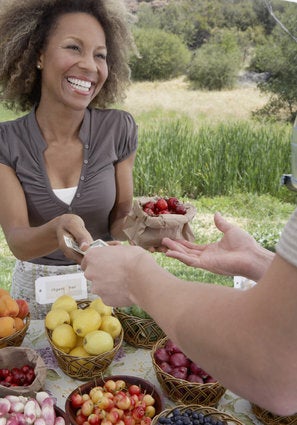
This past week, another microbial outbreak made the Canadian headlines. This time, the cause was a parasite with a name that sounds like a comic book supervillain, Cyclospora. It's officially known as a protozoan and in the last few months, caused 83 cases with a few requiring hospitalization.
Like many parasites, Cyclospora has numerous life stages. When in the environment, it survives as an oocyst, which looks like a ball under the microscope. It's rather innocuous at this stage. But, when it heads into the human intestines, it changes dramatically.
After about a week, the oocysts produce microscopic worms called merozoites. They are released into the gut and seek out the cells of the intestinal wall. Here, they infect the cells and thrive.
The immune system is not thrilled by this invasion and fights back. Unfortunately, it's hard to get rid of the intruders quickly and symptoms eventually develop. Common issues include diarrhea, vomiting, cramps, loss of appetite and eventually fatigue. For those with strong immune systems, the fight can be won although it may take weeks. For those with compromised immunity, it could take longer.
Thankfully, there is a way to get rid of the parasite. Antibiotics are usually quite effective and a simple prescription can end the suffering (just remember to take probiotics with them). Unfortunately, there is no lasting immunity meaning infection can recur.
From a public health perspective, Cyclospora has for the most part spread under the radar of the media. Despite the apparent novelty of the infection right now, the parasite has been a common visitor to Canada and had made many visits in the last 20 years. In Ontario, over 100 cases have been reported annually up until 2011. The trend is so obvious outbreaks can be forecasted every year sometime between late May and July.
The incredible predictability of infection has little to do with the nature of the organism. Instead, it all has to do with the seasonality of the food trade. The pathogen is not native to Canada. Instead, it has to be brought into the country by hitching a ride on a variety of contaminated food produce. This usually happens in the springtime when Canadians attempt to hasten up the availability of summertime fare.
In the spring, many of our favourite foods like lettuce, herbs, and berries, are not yet abundant here. They have to be brought in from elsewhere in the Americas. Food safety regulations are far less strict in these nations and the quality of the produce may be suspect. Although still considered rare, there is always the chance an imported food item may have awaiting oocysts ready to turn your enjoyment into misery.
There's only one way to rid your fruits and vegetables of the parasite -- washing. The oocysts are extremely resistant to disinfection so any attempts to kill them chemically will usually fail. All that's needed is some running water, a good rub, and you are good to go. Other helping options include soaking and cooking although they are not entirely necessary. Also, to prevent cross-contamination, make sure to handles these items separately from other food and wash your hands with soap and water before switching to another food product.
Of course, there is one more way to prevent Cyclospora from invading your gut. Avoid buying imported foods from suspect countries. This may not be easy, mind you, as the urge to have summer food when the weather starts to get warm is incredibly tempting. Although the product may have travelled thousands of miles, the mere idea of having a sweet raspberry or invigorating taste of cilantro could be enough to take the risk.
Thankfully, in many parts of Canada, produce is grown locally. You can easily verify a product is Canadian by looking at the label. It's because the source country for all produce has to be provided by law. Usually, accompanying price tags show the source country making the inspection even easier. Granted, the availability and abundance varies across Canada and sometimes we need to wait a few weeks before a local product is on the shelf. But when it comes to food safety, particularly from Cyclospora, the wait may be well worth it.
MORE ON HUFFPOST:
